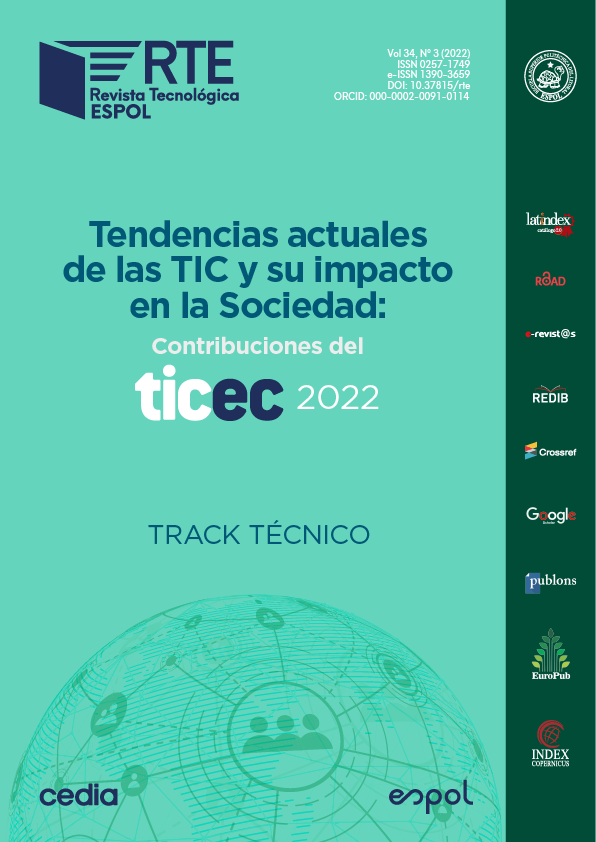In agriculture, water is vital for the crop. Knowing when to irrigate and how much to irrigate can be answered technically from data provided by weather stations. However, this data is not always available. In addition, although irrigation controllers are available on the market, they are not integrated with the stations and have a closed architecture. On the other hand, the development of electronics, the availability of affordable sensors, protocols, standards and open source, facilitate the integration of hardware and software components. This work proposes a prototype of an intelligent weather station that provides real-time data on temperature, ambient humidity, soil moisture, and rainfall, as input for a controller to activate irrigation in two cases: i) due to the need of water for crop development; or ii) to mitigate frost, supporting sustainable agricultural development with local, open source and affordable technology. The methodology was applied based on rapid prototyping, evaluating the operability of each electronic device and its integration in a controlled environment, and then in an experimental plot, at the Nero farm of the University of Cuenca. Open-source hardware and software were used for the development, using Arduino IDE and Visual Studio Code. A solar panel and batteries were used to power the system, optimizing consumption. This prototype has shown continuous and stable operation at 3100 meters over the sea level. It will continue to be monitored and improved, in order to make it available to the end user in the future.

This work is licensed under a Creative Commons Attribution-NonCommercial 4.0 International License.
References
Arduino.cc. (2021). Arduino Nano. Arduino Oficial Store. https://store.arduino.cc/products/arduino-nano
Bacco, M., Barsocchi, P., Ferro, E., Gotta, A., & Ruggeri, M. (2019). The Digitisation of Agriculture: a Survey of Research Activities on Smart Farming. Array, 3-4(August), 100009. https://doi.org/10.1016/j.array.2019.100009
Belayneh, B. E., Lea-Cox, J. D., & Lichtenberg, E. (2013). Costs and benefits of implementing sensor-controlled irrigation in a commercial pot-in-pot container nursery. HortTechnology, 23(6), 760-769. https://doi.org/10.21273/horttech.23.6.760
Campbell. (2022). CS655 Soil Water Content Reflectometer 12 cm. Campbell Scientific. https://www.campbellsci.eu/cs655
Davis. (2014). Rain Collector. Davis Instruments. https://cdn.shopify.com/s/files/1/0515/5992/3873/files/07395-332_Addendum_7852_7857_6450_6490.pdf
FAO (Organización de las Naciones Unidas para la Alimentación y la Agricultura). (1990). Evapotranspiración del Cultivo. Serie Didactica, Facultad de Agronomia y Zootecnica, Universidad Nacional de Tucuman, 45.
Iles, A., & Montenegro de Wit, M. (2018). Sovereignty at What Scale? An Inquiry into Multiple Dimensions of Food Sovereignty. The Politics of Food Sovereignty, 12(4), 61-76. https://doi.org/10.4324/9781315226156-5
Kernecker, M., Knierim, A., Wurbs, A., Kraus, T., & Borges, F. (2020). Experience versus expectation: farmers’ perceptions of smart farming technologies for cropping systems across Europe. Precision Agriculture, 21(1), 34-50. https://doi.org/10.1007/s11119-019-09651-z
Knierim, A., Kernecker, M., Erdle, K., Kraus, T., Borges, F., & Wurbs, A. (2019). Smart farming technology innovations – Insights and reflections from the German Smart-AKIS hub. NJAS - Wageningen Journal of Life Sciences, 90-91(October), 100314. https://doi.org/10.1016/j.njas.2019.100314
Medrano, H., Bota, J., Cifre, J., Flexas, J., Ribas-Carbó, M., & Gulías, J. (2007). Eficiencia en el uso del agua por las plantas. Investigaciones Geográficascas, 63-84.
Oke, T. R. (2004). Initial guidance to obtain representative meteorological observations at urban sites. World Meteorological Organization, 81, 51. http://www.geog.ubc.ca/~toke/IOM-81-UrbanMetObs.pdf
Pérez Morales, A. (2016). Riesgo de heladas en cultivos. Análisis y evaluación. Libro Homenaje al Profesor Alfredo Morales Gil, January 2016, 1005-1022. https://doi.org/10.14198/librohomenajealfredomorales2016-45
Perry, C., Steduto, P., & Karajeh, F. (2017). Does improved irrigation technology save water? A review of the evidence. En Regional Initiative on Water Scarcity for the Near East and North Africa (Vol. 42, Número 2). www.fao.org/publications%0Ahttps://www.researchgate.net/publication/317102271
Plett, D. C., Ranathunge, K., Melino, V. J., Kuya, N., Uga, Y., & Kronzucker, H. J. (2020). The intersection of nitrogen nutrition and water use in plants: New paths toward improved crop productivity. Journal of Experimental Botany, 71(15), 4452-4468. https://doi.org/10.1093/jxb/eraa049
Ramady, G. D., Lestari, N. S., Herawati, Hidayat, R., Zulkifli, R., Anisah, I., Dzulkarnaen, R., & Rakhman, A. (2021). Development of a Prototype Learning Model for the Hydroponic System based on Arduino Nano. Journal of Physics: Conference Series, 1933(1). https://doi.org/10.1088/1742-6596/1933/1/012089
Said Mohamed, E., Belal, A. A., Kotb Abd-Elmabod, S., El-Shirbeny, M. A., Gad, A., & Zahran, M. B. (2021). Smart farming for improving agricultural management. Egyptian Journal of Remote Sensing and Space Science, 24(3), 971-981. https://doi.org/10.1016/j.ejrs.2021.08.007
Sensirion. (2016). Datasheet SHT3x-DIS (Número August). https://www.mouser.com/datasheet/2/682/Sensirion_Humidity_Sensors_SHT3x_Datasheet_digital-971521.pdf
SODAQ. (2019). SODAQ Mbili (Arduino compatible ATmega 1284P). SODAQ. https://support.sodaq.com/Boards/Mbili/
Taha, A. (2018). Assessment of different ETO-Dependent Irrigation Levels for Pomegranate on Saving Water and Energy and Maximizing Farm Income. Journal of Soil Sciences and Agricultural Engineering, 9(11), 657-665. https://doi.org/10.21608/jssae.2018.36461
Vergara Romero, A. A., & Moreno Silva, A. N. (2019). Soberanía alimentaria en Ecuador: fundamentos teóricos y metodológicos para un modelo de medición. Revista Científica Ecociencia, 6(December 2019), 1-18. https://doi.org/10.21855/ecociencia.60.256







